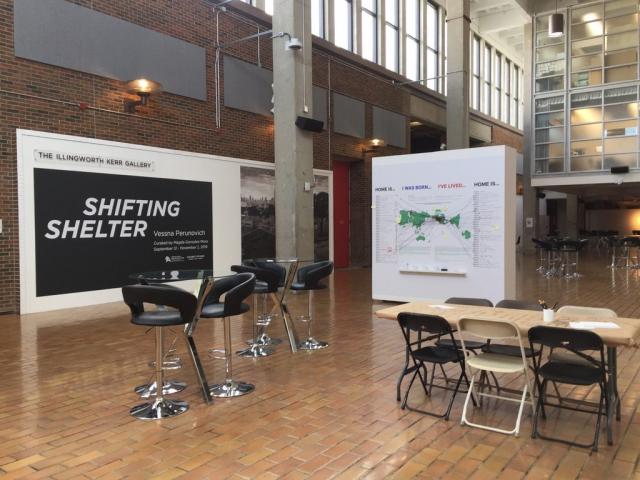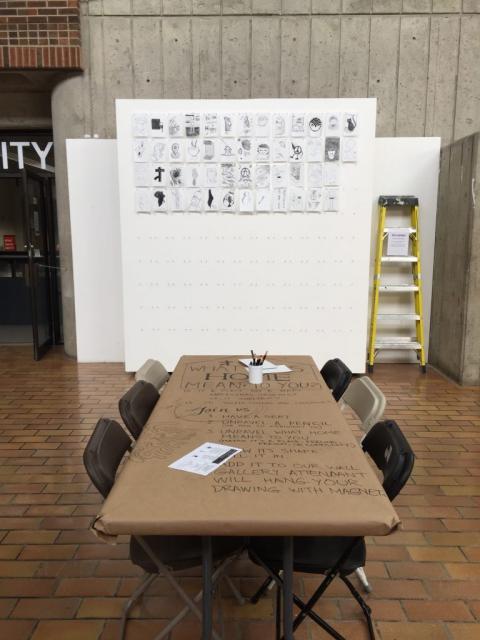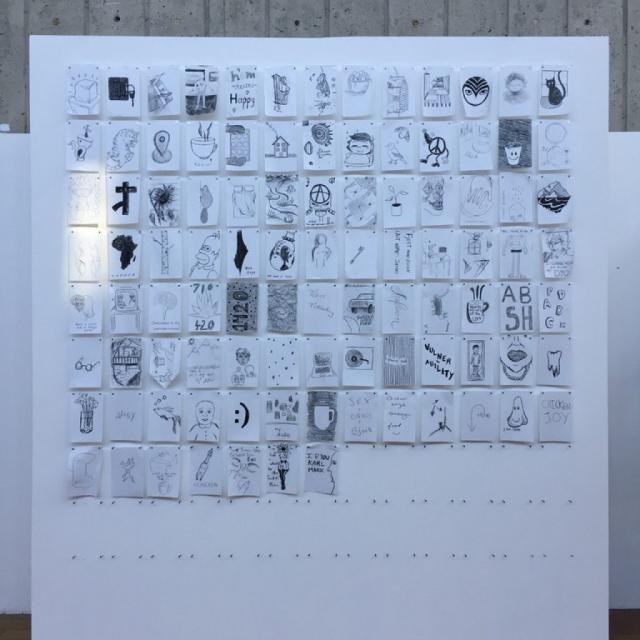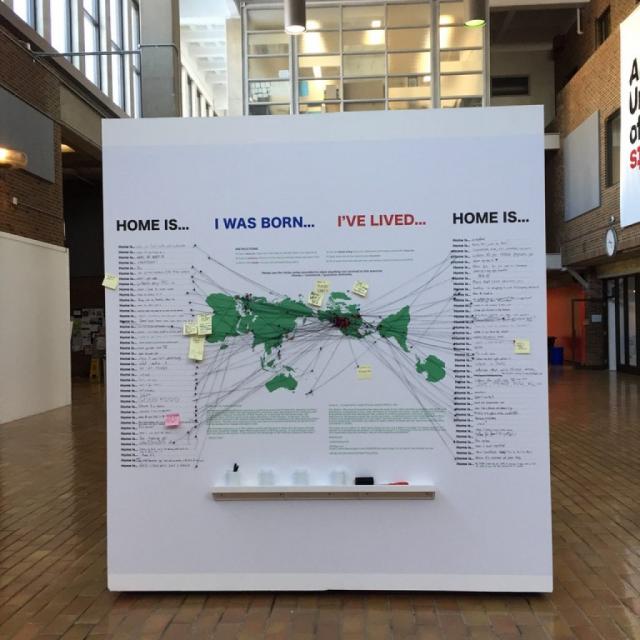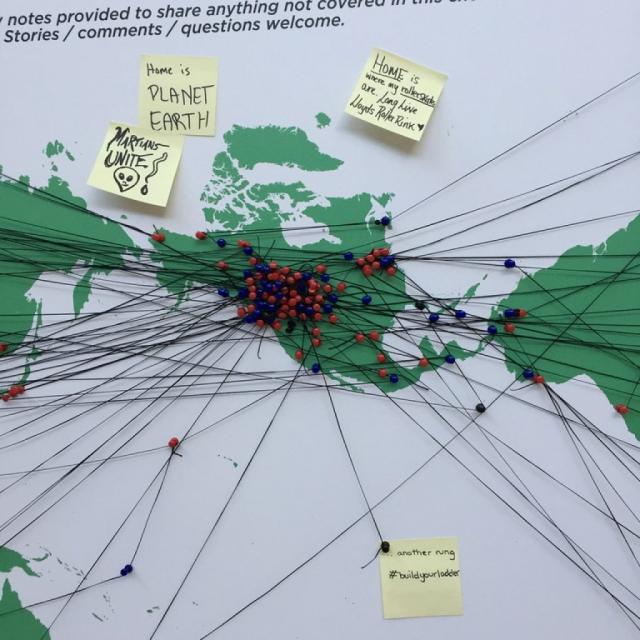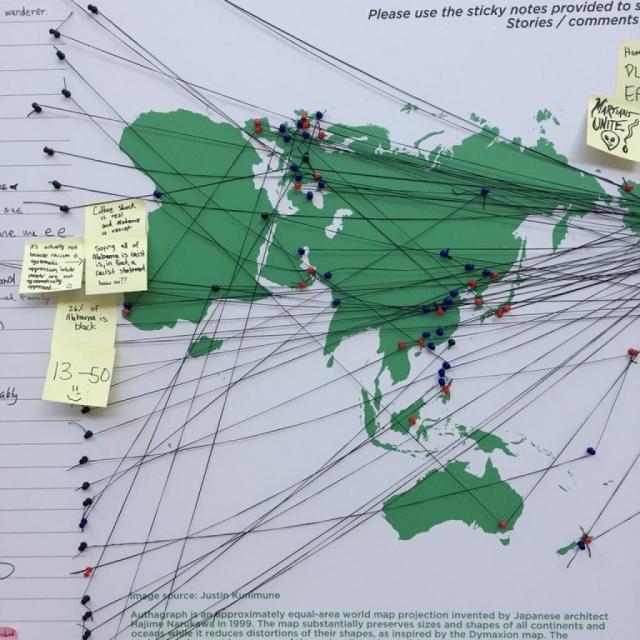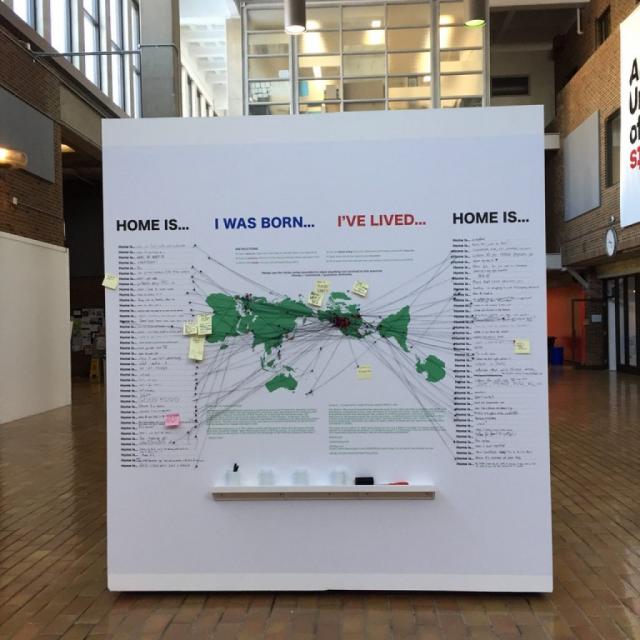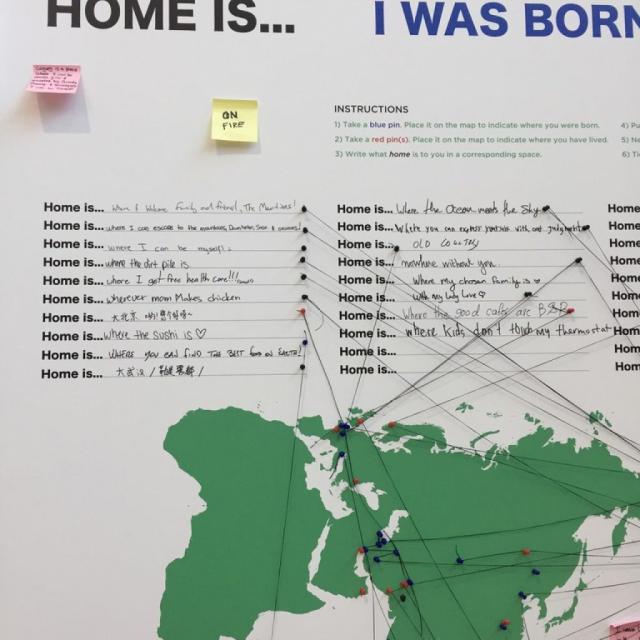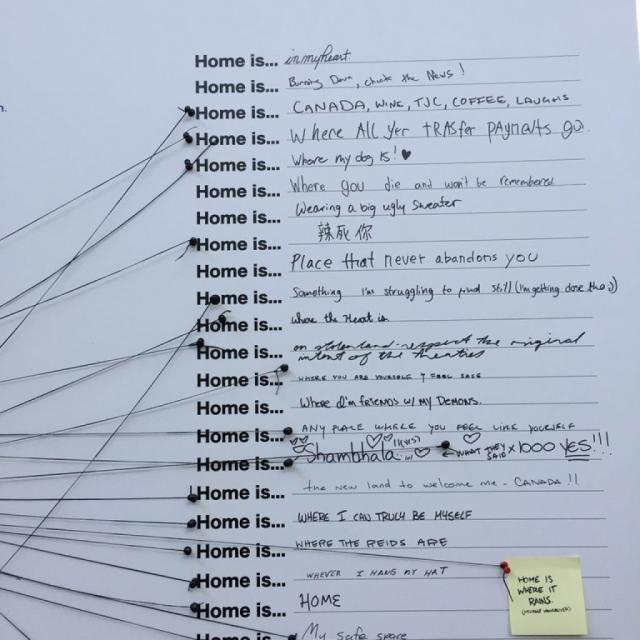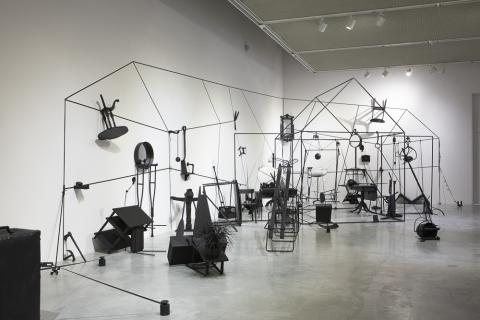Event
13 Sep 2019 - 1 Oct 2019
AUArts main mall
“Home is…” Mapping and Drawing Activity
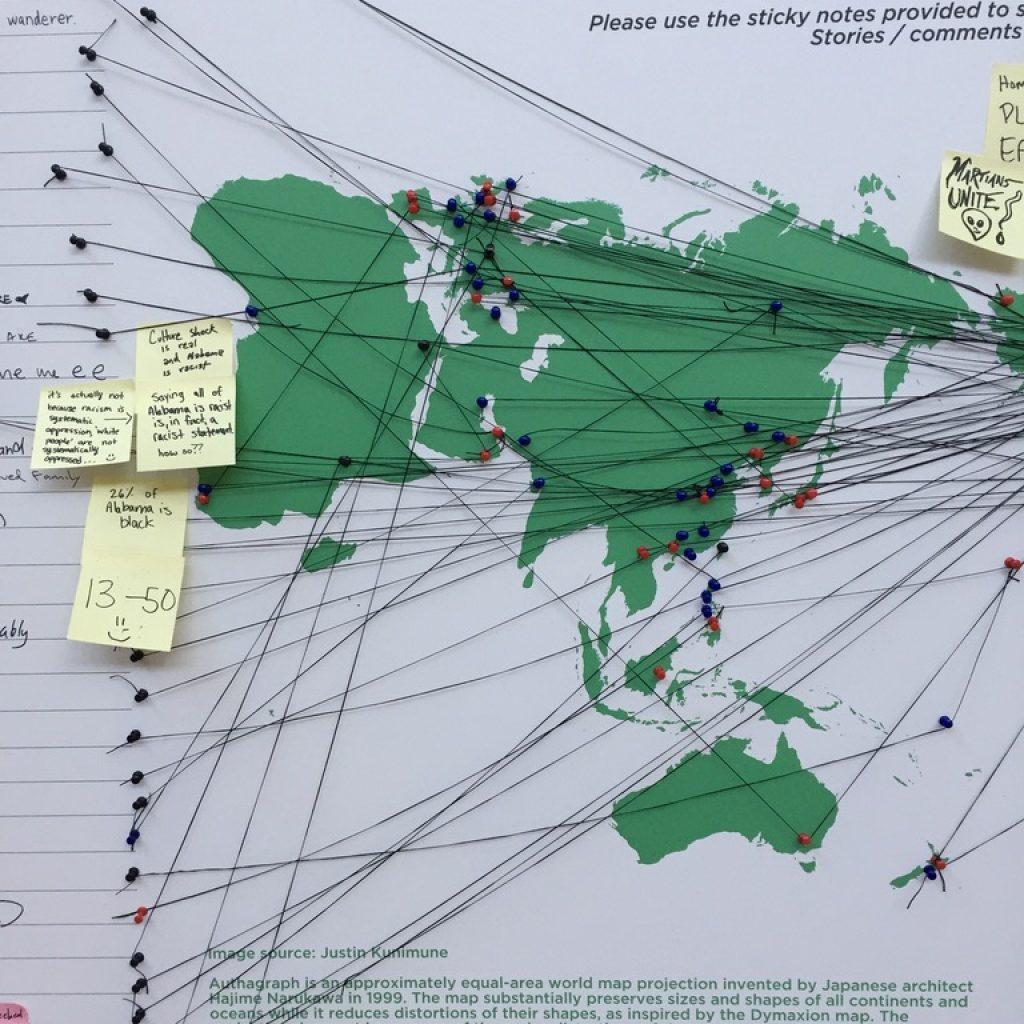
Home is…(Mapping) is an activity set up in the AUArt’s main mall hosted in conjunction with the exhibition, Shifting Shelter. The instructions ask participants to use different coloured push pins to indicate where they were born and where they’ve been. They are then asked to use the blank space provided to write what home is to them and connect the string from their statement to the push pins on the map.
We invite you to reflect on what home means to you; is it a place on a map? Ancestral origins? Is it shelter? Is it something we choose? A feeling? A person? A community? Can we define home in ways that supersede physical, political, cultural and imaginary boundaries?
As part of this project we also considered mapping and the colonial and problematic origins of these practices. The map we used for this activity is Kunimune’s Mutated Authagraph.
Authagraph is an approximately equal-area world map projection invented by Japanese architect Hajime Narukawa in 1999. The map substantially preserves sizes and shapes of all continents and oceans while it reduces distortions of their shapes, as inspired by the Dymaxion map. The projection does not have some of the major distortions of the Mercator projection, like the expansion of countries in far northern latitudes, and allows for Antartica to be displayed accurately and in whole. The Mercator projection is the one most of us would immediately recognize and is still the standard for Google and Apple maps. “The Mercator map gives us a 16th-century world view because it shows Europe larger, and the colonized countries smaller. Arno Peters criticized it in 1973 by saying, ‘It overvalues the white man and distorts the picture of the world to the advantage of the colonial masters of the time.’” – Ruben Pater
Home is…(Drawing) Using grease pencils and paper provided, visitors are invited to reflect on what home means to you; is it a place on a map? Ancestral origins? Is it shelter? Is it something we choose? A feeling? A person? A community? Can we define home in ways that transcend physical, political, cultural and imaginary boundaries?
The final produce will be a grid of drawings that mimic Vessna Perunovich’s installation An Archive of Insignificant Losses. Similarly to the map, these drawings can be viewed as collective visual storytelling about home, diversity, migration, movement and identity.
